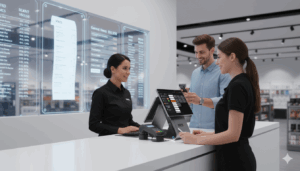When I Almost Lost Everything
Last March, I watched my friend Tony lock up his restaurant for the final time. Three years of 70-hour weeks, gone. His wife had warned him about the empty Tuesday nights, but Tony kept saying “things will pick up.” They didn’t.
I see this story everywhere. Restaurant owners pour everything into their dream, but most places fail within five years. Here’s what I’ve learned watching the ones that make it: successful owners don’t just hope for growth—they hack it. These proven growth hacks for restaurant owners separate the survivors from the statistics.

Stop Wasting Your Slowest Hours
Tuesday at 3 PM used to kill me. Empty tables, staff standing around, fixed costs eating profits. Then I met Sarah, who runs a breakfast spot downtown. She figured out something brilliant.
“Why fight the slow hours?” she asked me. “Why not own them?”
Sarah started “Power Lunch Meetings” – she’d call local real estate agents, insurance brokers, anyone who needed quiet spaces for client meetings. She offered free coffee refills and promised they wouldn’t get rushed out. Boom. Her dead zone became her most profitable margin hours.
Here’s what else works:
- Flash sales posted on Instagram stories one hour before slow periods
- “Study sessions” for college students with discounted coffee and pastries
- Happy hour appetizers that cost you $3 but sell for $8
My buddy Mike tried this at his burger joint. His 2-5 PM revenue jumped 180% in two months. Not rocket science, just thinking differently about empty seats.
Your Phone Is Your Best Marketing Tool (If You Use It Right)
Forget expensive ads. Your customers already have phones, and they love showing off good food.
I learned this from watching my daughter’s generation. They don’t just eat they document everything. Smart restaurant owners turn this behaviour into free marketing.
The Old Way vs. What Actually Works:
What Doesn’t Work | What Brings Customers |
Posting the same burger photo daily | Behind-the-scenes prep videos |
Ignoring comments and tags | Responding within an hour |
Generic “Come eat here!” posts | Stories about your regular customers |
Lisa runs a taco truck and gets this perfectly. When someone posts about her food, she shares it to her stories with “Thanks, Jennifer! Your smile made our day!” People eat that personal touch up.
Want easy content? Film your cook making signature dishes. Show deliveries arriving fresh. Interview longtime customers about their favorite orders. This stuff writes itself, and it feels genuine because it is.
Also and this changed everything for me claim your Google listing. Add photos weekly. Respond to every single review, good or bad. Local searches drive 80% of foot traffic for most restaurants.
Turn One-Time Customers Into Regulars Who Bring Friends
Getting new customers costs five times more than keeping existing ones. Yet most restaurant owners obsess over attracting strangers while their past customers eat somewhere else.
Here’s what changed the game for restaurants I know:
The Handwritten Note Trick: When families finish dinner, slip a handwritten note with their check. “Thanks for choosing us for date night, Mike and Susan. Here’s 15% off when you come back within two weeks.” Costs nothing. Works like crazy.
Birthday Programs That Don’t Suck: Skip the generic email blast. When someone mentions a birthday, write it down. Next year, call them personally. “Hi Janet, it’s Maria from Rossi’s. I remembered it’s your birthday month—want to book your usual table?”
The Simplest Loyalty Program: Punch cards work better than apps. People like seeing physical progress. Buy nine sandwiches, get the tenth free. My friend Dave swears by this at his deli.
Research backs this up—keeping customers 5% longer can double your profits. But you already knew that. The trick is actually doing something about it instead of hoping people remember you exist.
Partner Your Way to More Customers
Competition thinking kills restaurants. Collaboration thinking builds them.
The coffee shop next to my gym started putting protein powder in lattes. Genius. The gym recommends post-workout fuel, the coffee shop gets new customers who’d never think to stop there otherwise.
What’s Working Right Now:
- Team up with local bookstores for wine and book nights
- Partner with gyms for healthy meal prep orders
- Connect with offices for daily lunch delivery contracts
- Work with wedding planners for rehearsal dinners
My friend Anna runs an Italian place. She called every office building within three miles offering free lunch samples for their staff meetings. Landed four monthly catering contracts worth $2,800 each. One afternoon of phone calls.
Food delivery apps take 30% commission and give you zero customer data. Create your own delivery zone instead. Hire a part-timer with a car. Keep 100% of the profit and build real relationships.
Numbers Don't Lie (But Most Owners Ignore Them)
Successful restaurant owners track things that matter, not just what’s easy.
Track these weekly:
- How long tables stay occupied (aim for under 75 minutes)
- Percentage of customers who return within 30 days
- Average spending per person (not per table)
- Which menu items actually make money
The National Restaurant Association found that data-driven restaurants make 4% more profit than those winging it. That’s the difference between surviving and thriving.
Most owners know their food costs but can’t tell you their customer lifetime value. That’s backwards thinking.
Tony’s restaurant failed because he kept waiting for things to get better instead of making them better. The owners who succeed pick one strategy and commit to it for 90 days.
Don’t try everything at once. Pick the growth hack that fits your situation. Empty lunch hours? Focus there. No repeat customers? Fix retention first. Social media disaster? Start posting consistently.
Your restaurant deserves better than hope and luck. These growth hacks for restaurant owners work, but only if you work them.
What’s your first move going to be? Pick one strategy from this list and start tomorrow. Your future customers are waiting for you to figure this out.
FAQs
Use authentic social media storytelling, claim and optimize your online listings, gather customer reviews, and build strong community connections through partnerships and personalized service.
Remember regulars’ preferences, offer personalized interactions, implement simple loyalty programs, and communicate regularly with your customers through special offers and events.
Avoid overspending on unnecessary tools, neglecting customer experience, poor online presence, ignoring staff training, and failing to analyze data to inform decisions



